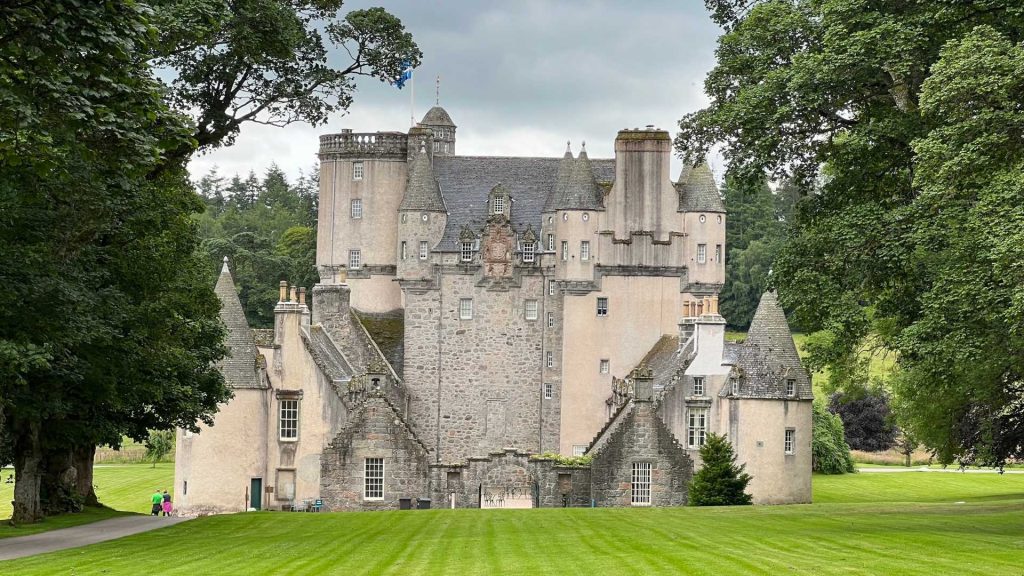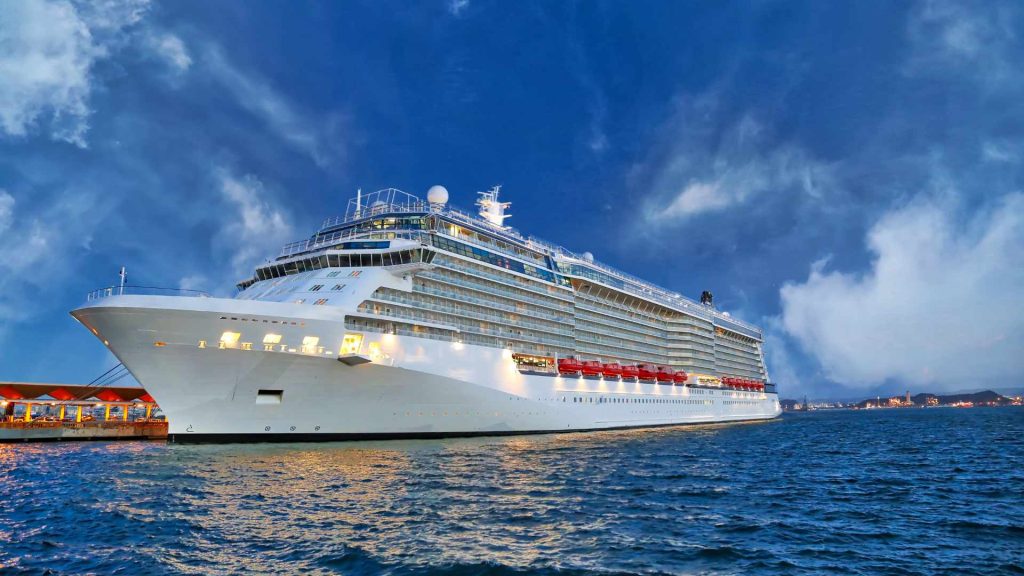Scotland beckons travelers with its rich tapestry of ancient castles, misty lochs, and vibrant cities. For those wondering what to do in Scotland, the answer lies in exploring a diverse landscape that seamlessly blends medieval architecture with breathtaking natural beauty. Wingbuddy’s “Best of Scotland” 9-day tour offers the perfect introduction to this enchanting country, taking you through carefully selected destinations that showcase Scotland’s most compelling places to see.
Whether you’re seeking the best cities to visit in Scotland or yearning to discover remote highland treasures, this comprehensive journey ensures you experience the very essence of Scottish culture and landscape. Let’s go on a quick virtual tour of Scotland:
Edinburgh
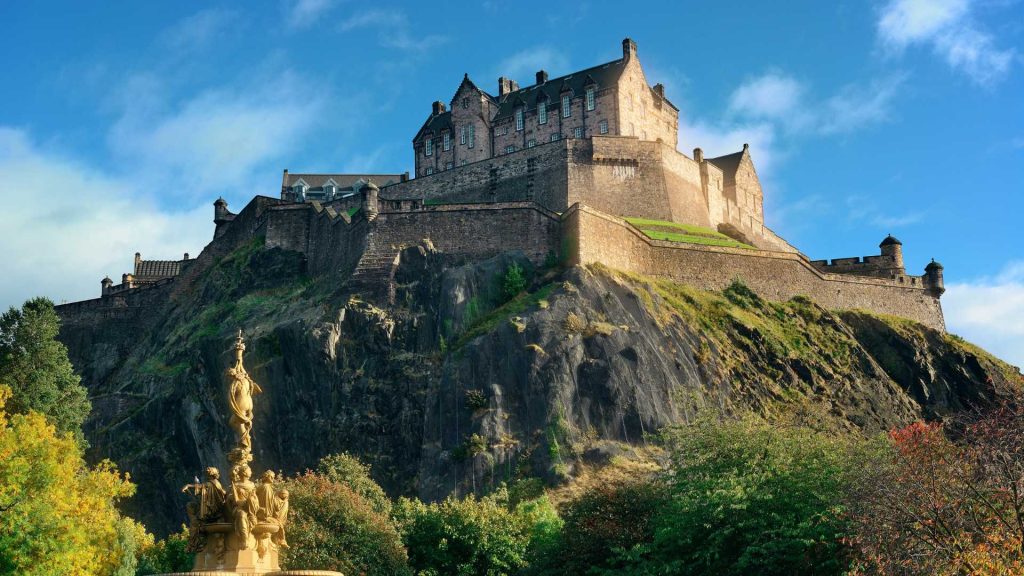
Edinburgh stands as one of Scotland’s crown jewels and the perfect starting point for any Scottish adventure. The city’s UNESCO World Heritage sites tell stories spanning centuries.
The iconic Edinburgh Castle dominates the city skyline from its volcanic rock perch. This ancient fortress houses the Crown Jewels and offers spectacular panoramic views across the city. Walking through its historic halls, you’ll discover the Stone of Destiny and the famous One O’Clock Gun, fired daily except Sundays.
The Royal Mile connects Edinburgh Castle to the Palace of Holyroodhouse, creating a historic thoroughfare lined with medieval buildings.
St. Giles Cathedral, with its distinctive crown spire, serves as Edinburgh’s High Kirk and showcases stunning Gothic architecture. The cathedral’s Thistle Chapel represents one of Scotland’s finest examples of ecclesiastical craftsmanship.
Edinburgh’s Old Town and New Town districts offer contrasting architectural styles. The Old Town features narrow closes and wynds that wind between towering tenements, while the New Town displays Georgian elegance with its planned streets and garden squares.
Mary King’s Close provides a fascinating underground journey through 16th-century Edinburgh life.
For nature enthusiasts, Arthur’s Seat presents an accessible hiking opportunity within the city limits. This extinct volcano rewards climbers with breathtaking views across Edinburgh and the Firth of Forth. The Royal Botanic Garden Edinburgh offers peaceful respite with its diverse plant collections and beautifully landscaped grounds.
The National Museum of Scotland houses remarkable collections spanning natural history, science, and Scottish culture.
Evening entertainment options include traditional pubs serving haggis and fine Scottish whisky, providing authentic culinary experiences that define Scottish hospitality.
Stirling
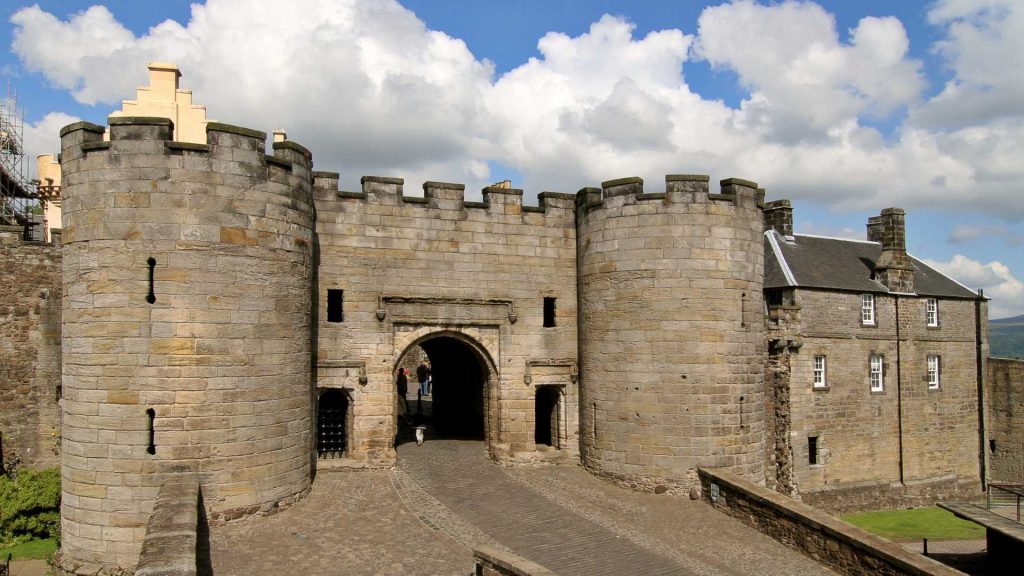
Stirling Castle ranks among Scotland’s most historically significant fortresses. Perched on a volcanic rock formation, this medieval stronghold controlled the strategic route between the Lowlands and Highlands for centuries. The castle’s Great Hall and Royal Palace showcase Renaissance architecture at its finest.
The Battle of Stirling Bridge monument commemorates William Wallace’s famous victory, while the nearby Wallace Monument offers insights into Scotland’s fight for independence.
Stirling’s historic center features well-preserved medieval architecture and charming cobblestone streets perfect for leisurely exploration.
Glasgow
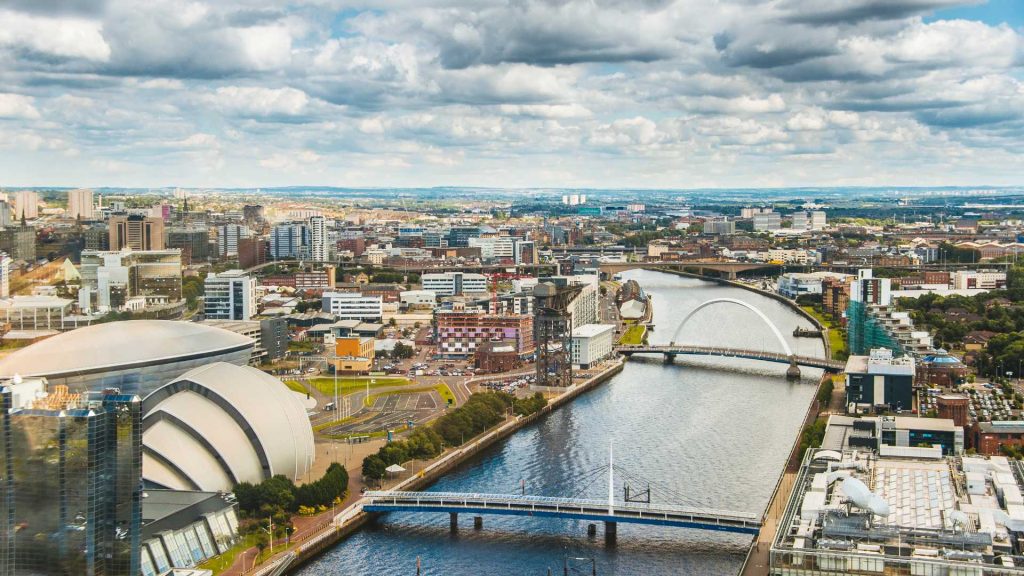
Glasgow represents Scotland’s largest city and serves as the country’s cultural heart. This vibrant metropolis combines Victorian grandeur with contemporary energy, creating a dynamic urban experience that captivates visitors.
George Square forms Glasgow’s civic center, surrounded by impressive Victorian buildings including the Glasgow City Chambers. The square’s monuments honor notable Scottish figures and provide perfect photo opportunities against the backdrop of architectural magnificence.
The Victorian district showcases Glasgow’s industrial prosperity through ornate buildings and elegant shopping arcades. The city’s architectural heritage spans multiple periods, from medieval St. Mungo’s Cathedral to Charles Rennie Mackintosh’s distinctive Art Nouveau designs.
Glasgow’s West End houses the prestigious University of Glasgow and the world-renowned Kelvingrove Art Gallery and Museum. The city’s cultural offerings include numerous theaters, concert halls, and galleries that cement its reputation as Scotland’s cultural capital.
Loch Lomond
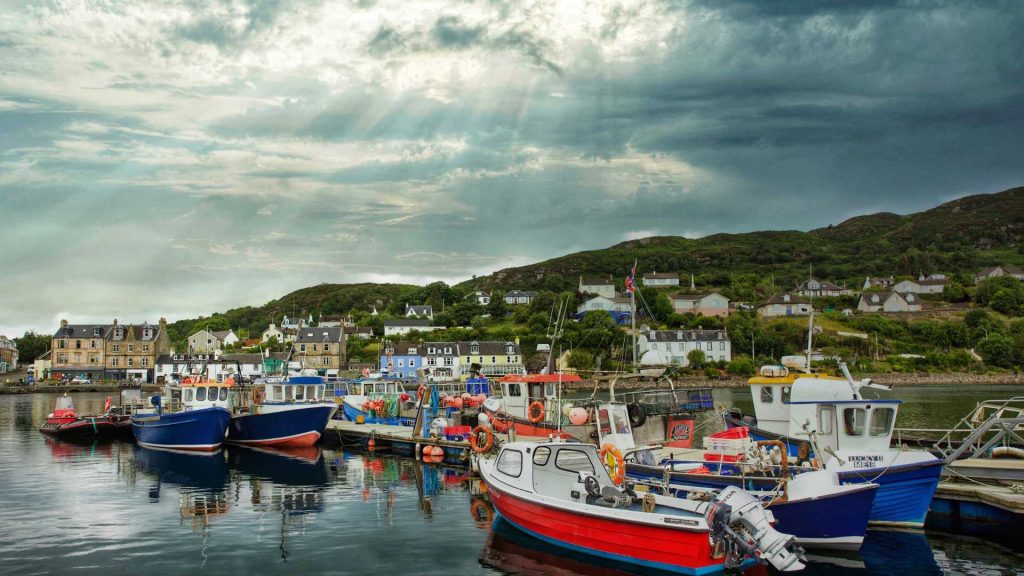
Loch Lomond epitomizes Scottish natural beauty with its pristine waters and surrounding highland scenery. This freshwater loch forms part of the Trossachs National Park and offers some of the most romantic landscapes in the United Kingdom.
A scenic cruise across Loch Lomond reveals the loch’s numerous islands and surrounding peaks. The journey provides excellent photography opportunities and chances to spot local wildlife including red deer and golden eagles. The surrounding countryside features ancient oak woodlands and heather-covered hillsides.
The loch’s southern shores offer gentle walking paths suitable for all fitness levels, while the northern reaches provide more challenging highland terrain for adventurous hikers.
Inveraray
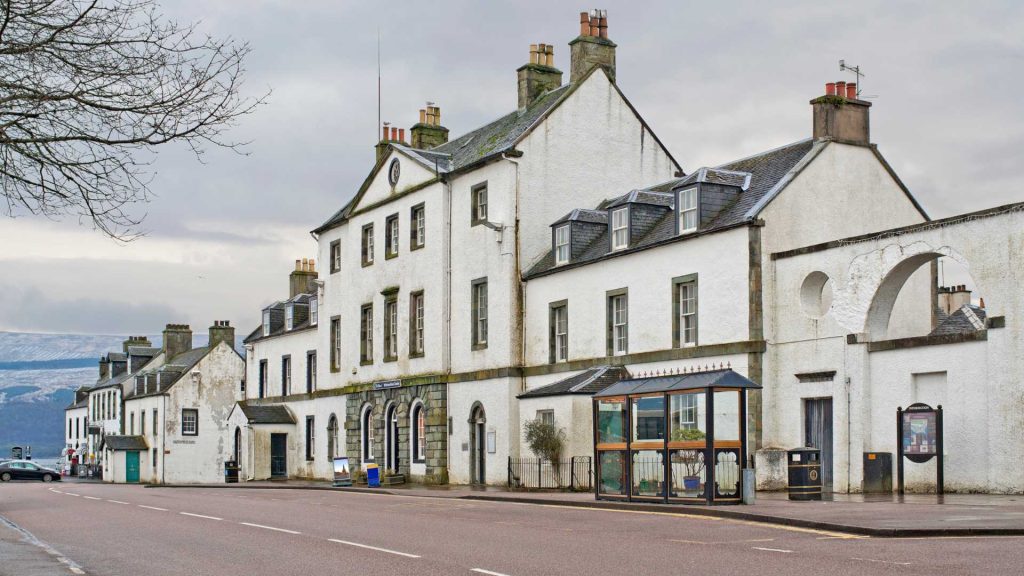
Inveraray presents a picture-perfect Scottish town dominated by the magnificent Inveraray Castle. This 18th-century castle serves as the ancestral home of the Dukes of Argyll and showcases exceptional Georgian architecture.
The castle’s interior features remarkable collections of fine art, antique furniture, and historical artifacts. The Armoury Hall displays one of the world’s finest collections of arms and armor, while the elegant state rooms demonstrate the aristocratic Scottish lifestyle through the centuries.
Inveraray town features whitewashed buildings along the shores of Loch Fyne, creating a charming Highland settlement that has remained largely unchanged for over two centuries.
Glencoe
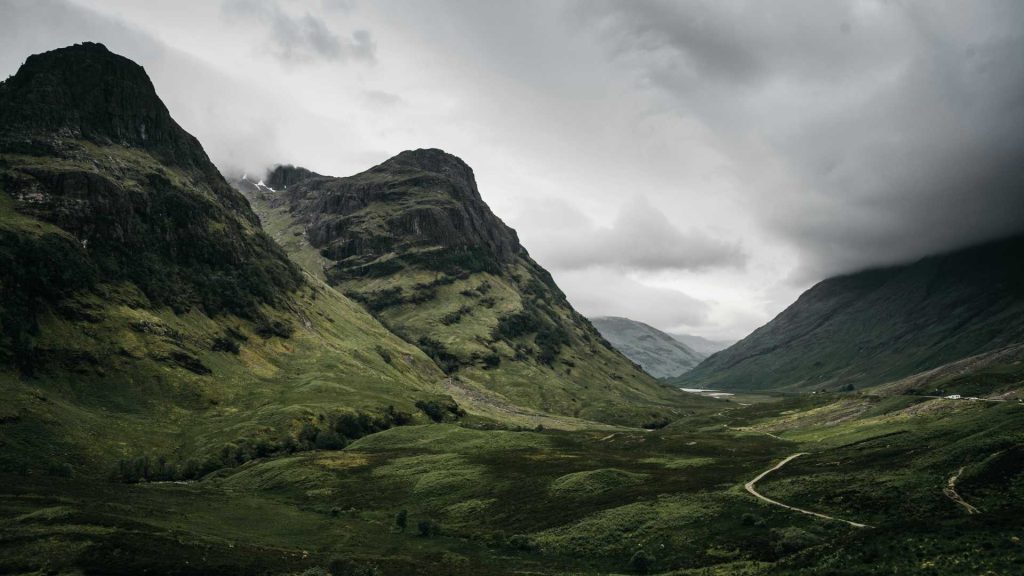
Glencoe Valley represents one of Scotland’s most dramatic and photographed landscapes. This glacially carved valley features towering peaks, cascading waterfalls, and haunting beauty that has inspired countless artists and writers.
The valley’s tragic history adds emotional depth to its natural splendor. The Massacre of Glencoe in 1692 remains one of Scotland’s most infamous events, commemorated by monuments throughout the valley.
Hiking opportunities abound in Glencoe, from gentle valley walks to challenging mountain ascents. The landscape changes dramatically with weather conditions, creating an ever-evolving panorama of highland scenery.
Fort William
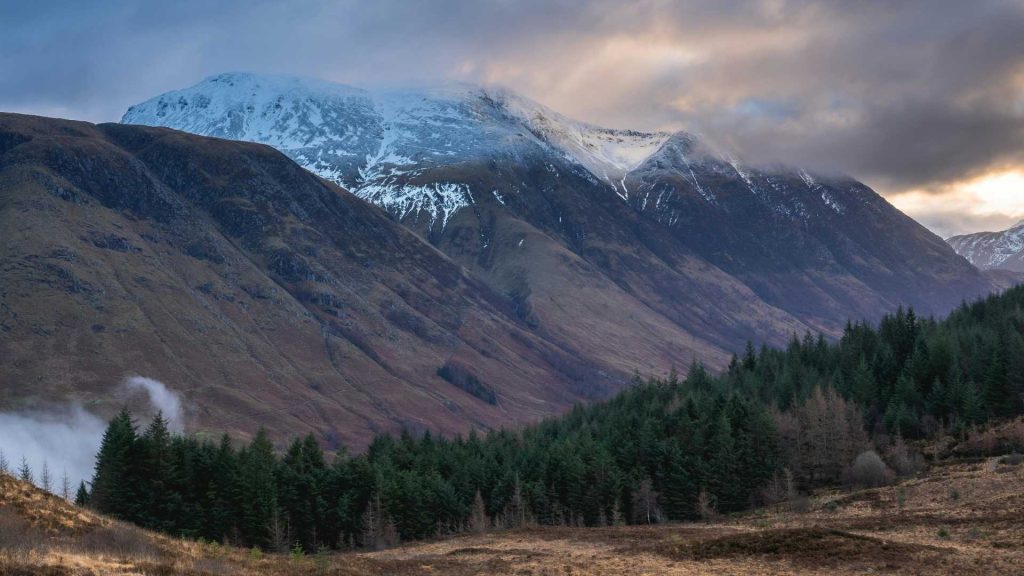
Fort William serves as the unofficial capital of the Scottish Highlands and provides access to Ben Nevis, the United Kingdom’s highest mountain. This bustling town offers excellent Highland hospitality while serving as a base for outdoor adventures.
The town’s location at the head of Loch Linnhe provides stunning water and mountain views. Local attractions include the West Highland Museum, which showcases Highland culture and history through engaging exhibits.
Fort William’s proximity to Ben Nevis attracts hikers and climbers from around the world, while the town itself offers comfortable accommodations and excellent dining options featuring fresh Highland produce and seafood.
Isle of Skye
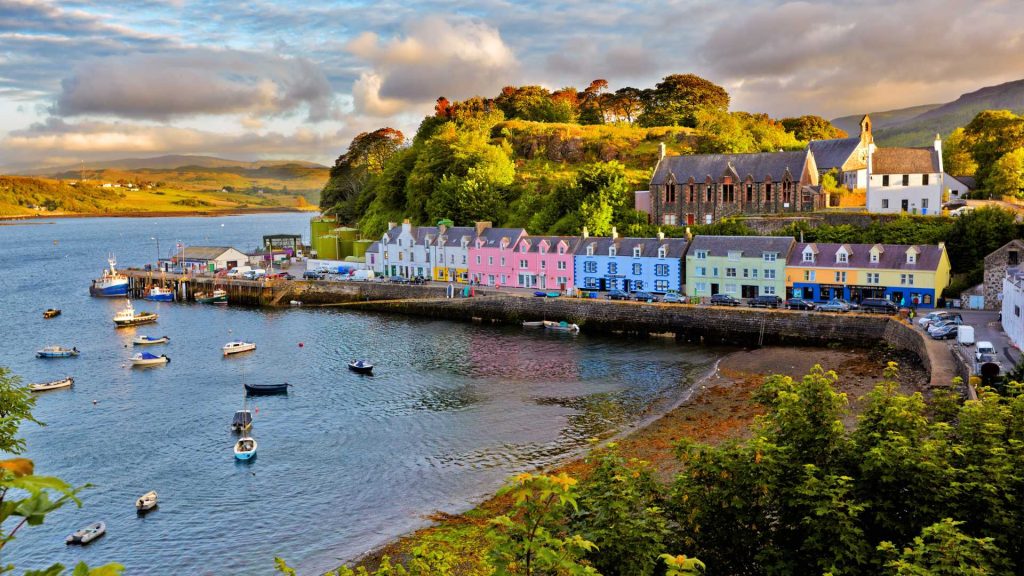
The Isle of Skye ranks among Scotland’s most magical destinations, offering dramatic landscapes that seem almost otherworldly. Connected to the mainland by the elegant Skye Bridge, this Hebridean island showcases Scotland’s rugged beauty at its most spectacular.
The journey to Skye includes passage through the enchanting Glenfinnan Valley, famous for its starring role in Harry Potter films. The iconic Glenfinnan Viaduct creates one of Scotland’s most photographed railway scenes.
Skye’s landscapes feature the dramatic Cuillin mountain range, ancient lava formations, and pristine beaches with crystal-clear waters. The island’s unique geology creates constantly changing scenery from rolling hills to jagged peaks.
Traditional Highland culture thrives on Skye, with Gaelic language still spoken in many communities. Local crafts, traditional music, and Highland hospitality provide authentic cultural experiences that connect visitors with Scotland’s Celtic heritage.
Eilean Donan Castle
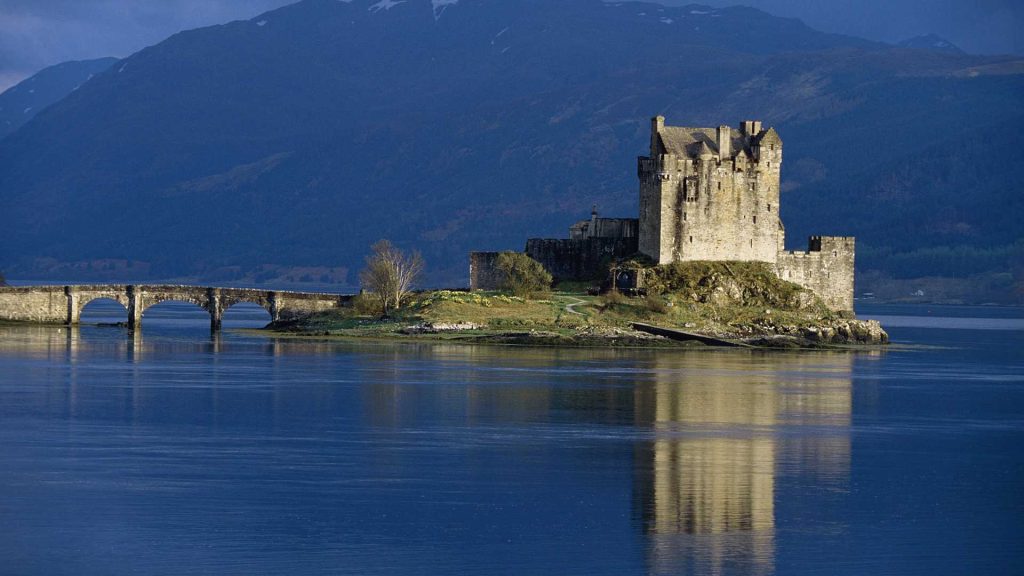
Eilean Donan Castle occupies a small tidal island where three sea lochs meet, creating one of Scotland’s most romantic and photographed settings. This 13th-century castle has been restored to medieval splendor and serves as a symbol of Highland Scotland.
The castle’s strategic location controlled important shipping routes for centuries. Today, visitors can explore the restored great hall, bed chambers, and battlements while enjoying spectacular views across the surrounding lochs and mountains.
The castle’s romantic setting has made it a popular filming location for movies and television programs, cementing its status as an iconic Scottish landmark.
Loch Ness
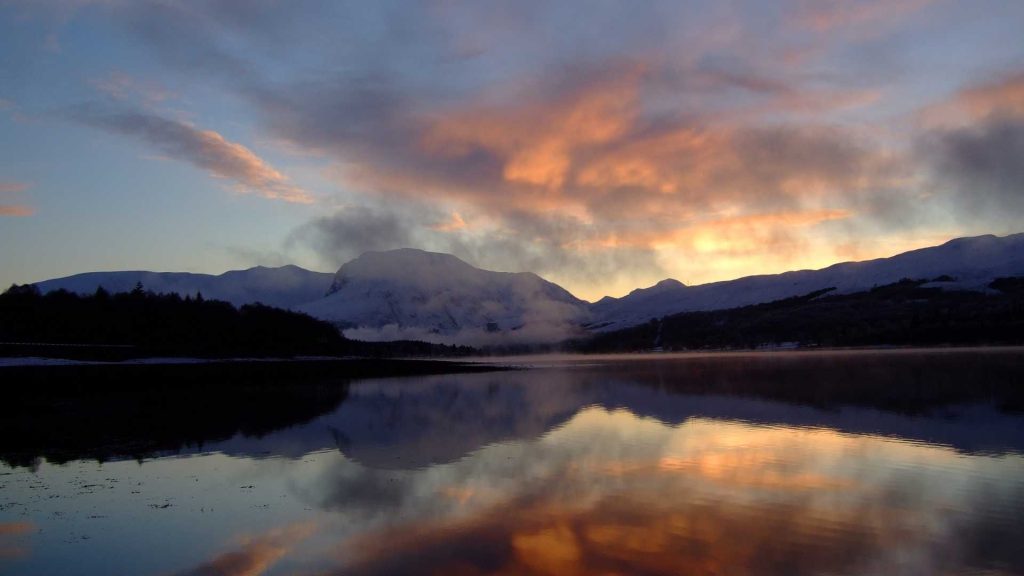
Loch Ness combines natural beauty with mysterious legend, creating one of Scotland’s most famous destinations. This deep freshwater loch stretches through the Great Glen, connecting Fort William with Inverness.
The legendary Loch Ness Monster has captured imaginations for centuries, though visitors come equally for the loch’s stunning Highland scenery. Locals joke that the Loch Ness Monster becomes considerably more cooperative after visitors have sampled several drams of fine Scottish whisky as the Nessie prefers an audience with properly warmed spirits.
Urquhart Castle ruins perch dramatically on the loch’s shores, providing excellent vantage points for monster spotting and photography. The castle’s 1,000-year history includes sieges, battles, and eventual destruction, leaving romantic ruins that enhance the loch’s mystical atmosphere.
Boat cruises on Loch Ness offer the best perspectives of the surrounding landscape while providing opportunities to learn about local folklore and natural history. The loch’s impressive depth (over 220 meters or 750 feet) adds to its mysterious reputation.
Speyside
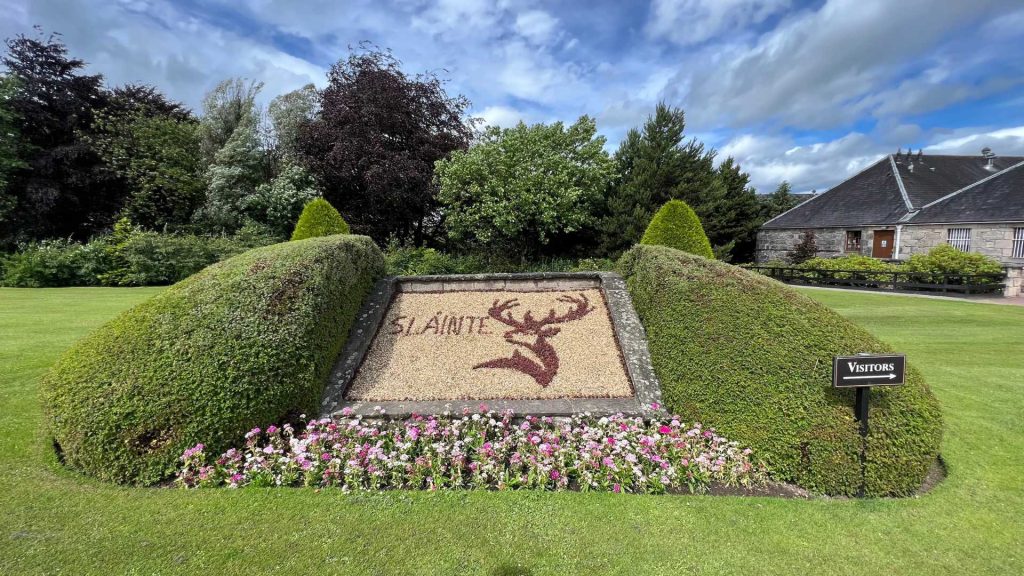
The Speyside region produces over half of Scotland’s single malt whisky. This fertile valley benefits from pure mountain water and ideal climate conditions for whisky production.
Distillery visits provide fascinating insights into traditional whisky-making processes, from malting and mashing to distillation and maturation. Guided tastings allow visitors to appreciate the subtle differences between various single malts and understand how local conditions influence flavor profiles.
Aberdeen
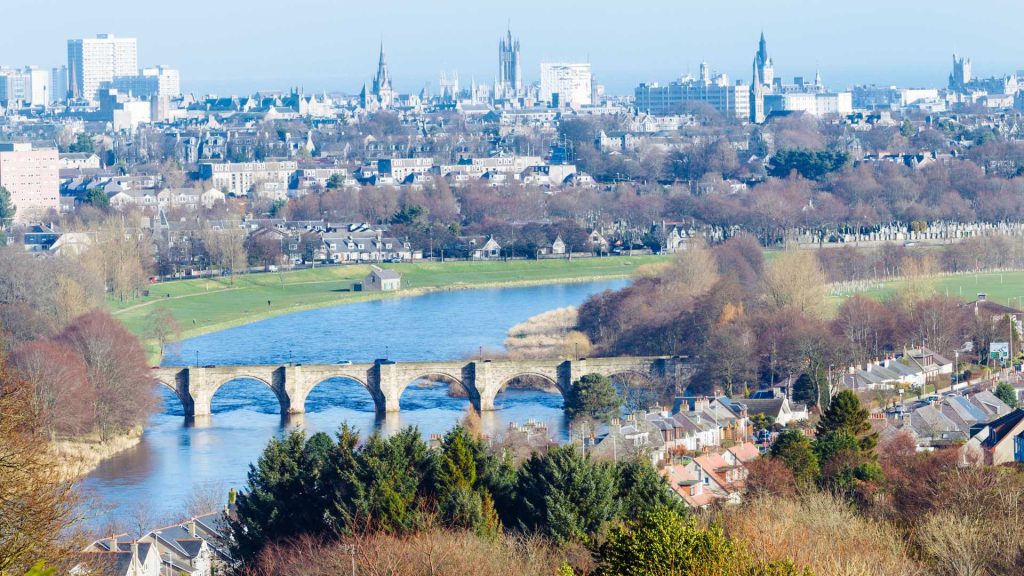
Aberdeen showcases distinctive granite architecture that earned it the nickname “The Silver City by the Sea.” This northeastern Scottish city combines historic charm with modern energy, serving as Scotland’s offshore oil capital while maintaining strong cultural traditions.
The city’s granite buildings create a unique silver-gray appearance that changes with lighting conditions throughout the day. Union Street forms the main thoroughfare, lined with impressive Victorian architecture and excellent shopping opportunities.
Aberdeen’s maritime heritage includes a busy harbor where fishing boats and offshore supply vessels create a working waterfront atmosphere. The city’s beaches offer excellent walking opportunities and stunning North Sea views.
Dunnottar Castle

Dunnottar Castle occupies one of Scotland’s most dramatic settings, perched on cliff-top ruins overlooking the North Sea. This medieval fortress survived numerous sieges throughout its turbulent history and now stands as romantic ruins against spectacular coastal scenery.
The castle’s location provided natural defenses while offering commanding views along the coastline. Today, visitors can explore the ruins while enjoying breathtaking panoramas of rugged cliffs and crashing waves.
The approach to Dunnottar involves a scenic clifftop walk that builds anticipation before revealing the castle’s spectacular setting. Beware: there are a good amount of steps to climb down and up to reach the castle.
St. Andrews
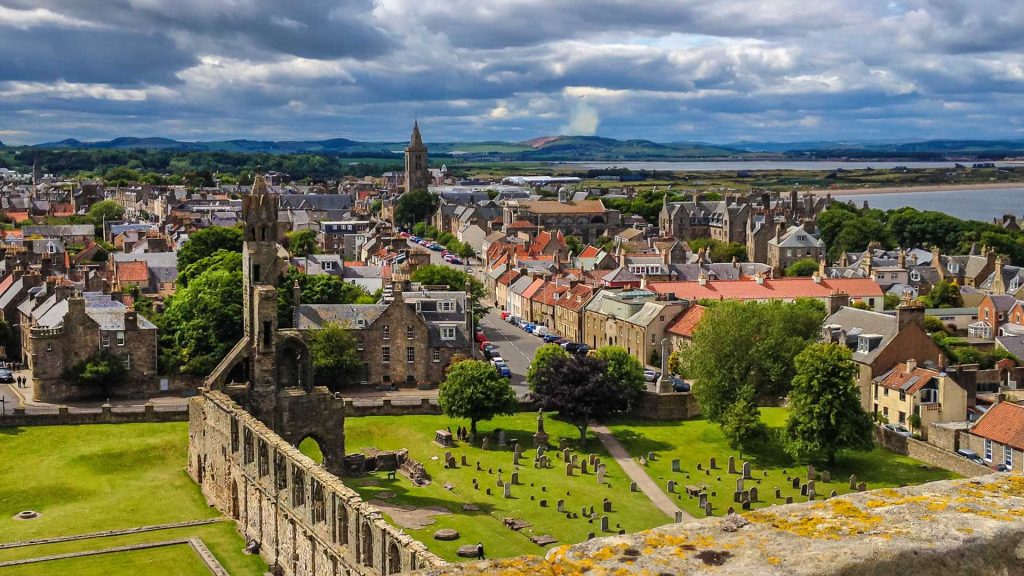
St. Andrews holds special significance as the birthplace of golf and home to Scotland’s oldest university. This historic Fife town combines academic tradition with sporting heritage, creating a unique cultural destination.
The Old Course at St. Andrews represents golf’s most famous venue, where the game has been played for over 600 years. The course’s 18th hole, known as the Home of Golf, provides pilgrimage destinations for golf enthusiasts worldwide.
St. Andrews University, founded in 1413, ranks among Scotland’s most prestigious educational institutions. The university buildings showcase various architectural periods while maintaining academic traditions that span six centuries.
Why Choose an Organized Tour for Scotland
Scotland’s diverse destinations and unpredictable weather make organized tours particularly valuable. Professional guides provide historical context and local insights that enhance every destination’s significance. Comfortable transportation eliminates driving concerns on narrow Highland roads, while pre-arranged accommodations ensure quality lodging throughout your journey.
Organized tours also provide access to exclusive experiences and local connections that individual travelers often miss. Expert guides share insider knowledge about the best photography spots, local traditions, and hidden gems that make each destination memorable.
Wingbuddy’s “Best of Scotland” tour perfectly balances guided experiences with free time for personal exploration. This approach allows you to benefit from professional expertise while maintaining flexibility to pursue individual interests in each destination.
The tour’s carefully planned itinerary ensures you experience Scotland’s highlights without feeling rushed. Each destination receives adequate time for proper exploration, while comfortable accommodations provide restful evenings to process the day’s discoveries.
From Edinburgh’s royal grandeur to Skye’s mystical landscapes, Scotland offers experiences that satisfy every traveler’s dreams. An organized tour ensures you capture the very best of what Scotland has to offer, creating memories that will last a lifetime.
Essential Travel Information
Entry Requirements
From April 2, 2025, eligible citizens of the European Union, Canada, and the United States will need an Electronic Travel Authorization (eTA) to travel to or through the United Kingdom. Apply for your eTA well in advance of your departure date to ensure smooth travel arrangements.
Packing Essentials for Scottish Weather
Clothing Must-Haves: Scotland’s unpredictable weather requires versatile clothing options.
Pack waterproof jacket and pants as essential items—Scottish weather can change rapidly from sunshine to showers. Warm layers including sweaters, fleece, and light jackets will provide flexibility for varying temperatures. Don’t forget comfortable waterproof walking shoes for city exploration and countryside walks.
Base layers including long-sleeved shirts and thermal leggings will offer warmth and comfort during cooler periods. Casual clothing for daytime comfort should include a mix of shirts, trousers, and lighter options for warmer days. Hat, scarf, and gloves will be essential during autumn and winter visits.
Technical Essentials: If you travel from North America or continental Europe, you will need a UK travel adapter for your devices to stay charged throughout the trip. While available locally for 5-7 pounds, bringing your own adapter proves more convenient.
Health and Comfort Items: Insect repellent will protect against midges, particularly troublesome in the Highlands and near water bodies. It’s also good to have a basic first-aid kit with band-aids, antiseptic wipes, and pain relievers that handle minor issues. A reusable water bottle will be a great companion as you can take advantage of Scotland’s safe tap water.
Photography and Exploration Gear: Camera with extra batteries and memory cards will help you capture Scotland’s stunning scenery. If you are into bird watching, bring your binoculars. Also, a comfortable backpack will be handy to carry daily essentials during walking tours and free exploration time.
Weather Protection: Sunglasses and sunscreen remain important even on cloudy days as the Scottish sun can be surprisingly strong. Waterproof covers for electronics can help protect valuable items during unexpected showers.
Money Matters
Scottish establishments widely accept credit cards, with many venues operating cashless systems. However, carrying some cash proves smart for small purchases, tips, and venues in remote areas. ATMs are readily available in cities and towns throughout your tour route. North American credit cards are widely accepted.
Cultural Considerations
Scottish hospitality is legendary, and locals appreciate visitors who show interest in their culture and history. Learning a few basic Scottish terms enhances interactions, though English is universally spoken. Here are some popular words that you’ll hear while in Scotland:
Wee: Small or little
Usage: “We’ll take a wee break at the castle” or “That’s a wee bit of rain”
Ken: To know
Usage: “Do you ken where the distillery is?” or “I ken that place well”
Bonnie: Beautiful, pretty, or attractive
Usage: “What a bonnie view of the loch” or “She’s a bonnie lass”
Dram: A measure of whisky
Usage: “Fancy a wee dram?” or “Let’s sample a dram at the distillery”
Braw: Good, fine, or excellent
Usage: “The weather’s braw today” or “That was a braw meal”
Aye: Yes
Usage: Simple affirmative response in any context
Tipping practices in Scotland follow the general UK standards: 10-15% in restaurants when service charge isn’t included.
Transportation
Your organized tour handles all transportation logistics, but understanding Scottish road conditions helps appreciate the journey. Highland roads can be narrow and winding, making professional drivers particularly valuable. The Wingbuddy tour includes comfortable coaches suitable for Scotland’s varied terrain.
